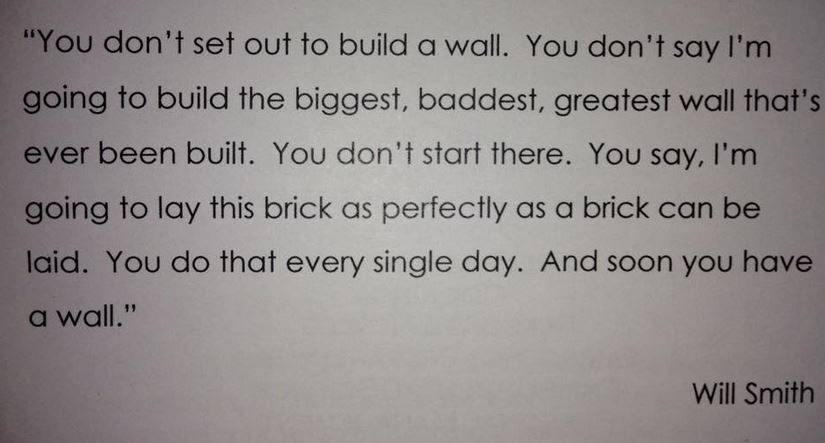Restore: The Legs Program
welcome!
To hear an overview of Restore: The Legs Program, and learn the best way to get started on your journey, PLEASE listen in to the 5-minute video below.

This quote from actor Will Smith, embodies the kind of approach to training that we want to use with this program! Brick by brick!
Here’s the first advice I can give you to ensure you experience great success with this program: GET OUT of your shoes whenever you can. Watch this “TIPs” video I created for IG to learn more.
Near the end of this video TIP, I mention “Short Foot” exercise. You’ll find the instructional video for this exercise in the “FEET” area of this program! 🙂
Is our focus on improving flexibility?
I have always believed that possessing an appropriate amount of flexibility is important for both durability and performance. And of course, for staying “youthful.” I mean, when you think of “flexible,” don’t you also think of children and of being younger? I do.
That being said…the thing I’ve struggled with over the years, is why so many different approaches, modalities, methods, or practices…that I’ve employed myself or with coached athletes routinely, simply didn’t produce the long term results that I was seeking. In other words, why do something daily if you NEVER actually improve or get benefit from it?
Why wasn’t my own mobility (and that of the athletes that I work with) improving at the rate I wanted or believed it needed to?
Many of the athletes I have worked with HAVE achieved real results with bodyweight strength training. And what’s the key principle behind that approach or philosophy? Generating tension from within! Time under tension/load, NOT passive repetitions that do little to stimulate tissue changes at the cellular level.
Think for a moment if you will, about so many of the modalities endurance athletes typically use, or do….yoga comes to mind. Getting up onto a massage table is another.
What about Rollers, myofascial release, acupuncture, just pick your modality…..what is the universal element with most if not all of these?
It’s all predominantly passive. Now you may be saying, yoga isn’t passive – it does require some work. And depending upon the class, that could be true. The question comes back to how the individual is approaching it and whether or not there’s any real progression. In my experience, there often isn’t. Especially for the athlete that needs it the most!
“Passive measures yield passive results. Active measures yield active results.”
I remember sitting and thinking on that one for a while after hearing it said by Dr. Andreo Spina, the creator of FRC.
It made so much sense to me and aligned with all I had learned the hard way in years of coaching.
I thought of all of the things I had done or presented over the years that were flexibility or mobility oriented, and/or the various ways we had explored warm-ups, or modalities to dynamically prepare to move. Or to address flexibility or mobility restrictions.
I mean, if I have to do something daily forever, doesn’t that mean that it’s not improving?
To summarize, passive flexibility – how stretchy and long your tissues are, doesn’t get us where we want to go.
Sure, the more you have the better, but only because you have the baseline to THEN develop the ability to actively develop mobility and strength!
In this program, we’ll be using our passive flexibility to get stronger and gain better control of it, that will be our goal.
Onward we go!
If you would like to print a PDF of the written information on this page, CLICK HERE!
